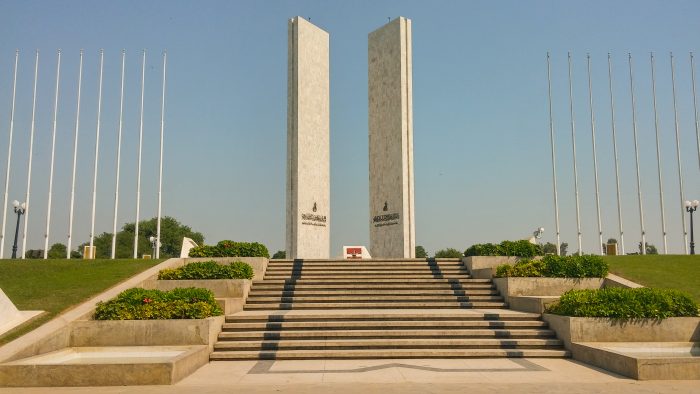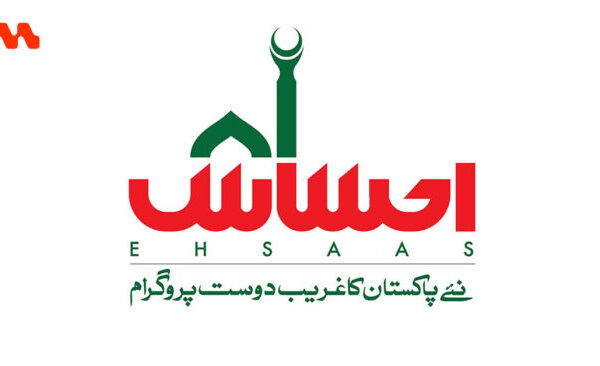The Population of Pakistan has exceeded 200 million people, ranking it as the fifth most populous nation globally. Within Pakistan, there are several megacities bustling with activity.
As the country with the second-largest Muslim population, Pakistan spans an area of 881,913 square kilometers (340,509 square miles), making it the 33rd largest country in the world. Pakistan boasts a coastline of 1,046 kilometers (650 miles) along the Arabian Sea and Gulf of Oman, and shares borders with India, Afghanistan, Iran, and China.
Pakistan is renowned for its cultural diversity and rich heritage. The official language of Pakistan is Urdu, but the country is also home to numerous regional languages spoken across its various regions.
Here are some of the most populous cities in Pakistan, based on the 2017 Census of Pakistan.
List of Top 10 Pakistani Cities Based on Population
Karachi

Karachi, the largest city in Pakistan and one of the world’s twelve largest cities holds a prominent position. Serving as the capital of Sindh province and classified as a beta-global city, Karachi is a major industrial and financial center in Pakistan. It boasts an estimated GDP of $164 billion (PPP) as of 2019.
Among the top 10 cities in Pakistan based on population, Karachi takes the lead with a population exceeding 14 million. This city showcases a remarkable cosmopolitan character, with a diverse mix of languages, ethnicities, and religions. Karachi is known for its social liberalism and secularism, distinguishing it from other cities in the country. Situated along the Arabian Sea, Karachi plays a vital role as a transportation hub, hosting Pakistan’s largest seaports, Jinnah International Airport, and Bin Qasim Port. The city also offers a wealth of historical, cultural, and natural attractions.
According to the 2017 national census, Karachi’s total population stood at 14,916,456, with approximately 12.9 million residing in the urban areas of the city proper. With a significant presence of various ethnic groups from Pakistan, Karachi is recognized as one of the fastest-growing cities in the world.
Lahore

Lahore serves as the capital of Punjab, the largest province in Pakistan, and stands as the country’s second-largest city after Karachi. It holds the distinction of being the 26th largest city in the world. Lahore is a significant cultural center within the Punjab region.
Known for its prosperity, Lahore boasts an estimated GDP of $84 billion as of 2019. It stands as the primary city and historical cultural hub of the greater Punjab region, embodying social liberalism, progressiveness, and cosmopolitanism. For those planning to explore the city, there are numerous top attractions worth visiting in Lahore.
Faisalabad

Faisalabad ranked as the third-largest city in Pakistan in terms of population, following Karachi and Lahore. It holds the position of being the second-largest city in the province of Punjab, after Lahore. Faisalabad was one of the first planned cities during the British India era and has evolved into a cosmopolitan metropolis.
Faisalabad has experienced significant growth in recent years due to its strategic location within the region, excellent transportation connections via roads, rails, and air, and its reputation as a thriving industrial and distribution center. Often referred to as the “Manchester of Pakistan,” it has witnessed remarkable economic development. In 2013, Faisalabad’s GDP (PPP) was estimated at $43 billion, and it is projected to reach $87 billion by 2025, exhibiting a growth rate of 5.7%. The city contributes over 10% to Punjab’s GDP and maintains an average annual GDP (nominal) of $20.5 billion. Agriculture and industry are key sectors driving Faisalabad’s economy.
Rawalpindi

Rawalpindi, located in the Punjab province of Pakistan, serves as the capital city of the Rawalpindi Division. It is the fourth-largest city in Pakistan in terms of its population. Moreover, the larger Islamabad-Rawalpindi metropolitan area is the country’s third-largest metropolitan area. Rawalpindi is in close proximity to Pakistan’s capital city, Islamabad, and the two cities are often referred to as the “twin cities” due to their strong social and economic connections.
Rawalpindi is a vibrant city with a rich historical background. It houses significant landmarks, including the renowned Raja Bazar, one of Pakistan’s largest markets.
Gujranwala

Gujranwala is a city located in Pakistan and serves as the capital of the Gujranwala Division. It is commonly known as the “City of Wrestlers” and is renowned for its culinary delights. Gujranwala is the fifth-most populous metropolitan area and city in Pakistan. It was established in the 18th century, making it relatively modern compared to the neighboring cities that have a millennia-old history.
Today, Gujranwala is a vital industrial center in Pakistan, following the footsteps of Karachi and Faisalabad. It contributes significantly to the country’s GDP, accounting for 5-9% of the total. The city forms part of a network of urban centers in northeast Punjab province, creating one of Pakistan’s highly industrialized regions. Together with Sialkot and Gujrat, Gujranwala forms the “Golden Triangle” of industrial cities with export-oriented economies.
Peshawar

Peshawar, also known as Purushapura, serves as the capital city of Pakistan’s Khyber Pakhtunkhwa province and holds the distinction of being the largest city in the province. It is the sixth-largest city in Pakistan and the largest city with a Pashtun majority.
Situated in the Valley of Peshawar, east of the historic Khyber Pass and near the border with Afghanistan, the city boasts a rich and recorded history dating back to 539 BCE. This makes it one of the oldest cities in Pakistan and in the South Asian region.
Multan

Multan, located in the Punjab province of Pakistan, serves as the capital of the Multan Division. It is positioned on the banks of the Chenab River and is the seventh-largest city in the country. Multan has a deep historical significance that stretches back to ancient times and it stands as a major cultural and economic center in Southern Punjab.
During medieval Islamic India, Multan played a crucial role as a trading hub and was renowned for being a home to numerous Sufi mystics during the 11th and 12th centuries. The city earned the nickname “City of Saints” due to its abundance of Sufi shrines. Multan, along with the nearby city of Uch, is particularly famous for its numerous historical Sufi shrines.
Multan is a bustling city with a population exceeding 1.5 million people. It holds significant importance as an industrial center and is home to various historical sites and landmarks. Exploring the top 10 places to visit in Multan will not only introduce you to the city’s shrines but also a diverse range of historical landmarks. A visit to Multan is highly recommended, as it promises to leave a lasting impression.
Hyderabad

Hyderabad is the second-largest city in the Sindh province of Pakistan, located approximately 150 kilometers inland from Karachi, the country’s largest city. It is well-connected to Karachi through a direct railway and the M-9 motorway, and it holds significant importance as a major industrial and economic center in Pakistan.
Islamabad

Islamabad, the capital city of Pakistan, is administered by the federal government as part of the Islamabad Capital Territory. It ranks as the ninth-largest city in Pakistan. Apart from its status as the capital, Islamabad offers a range of attractions for tourists. The city was purposefully planned and built in the 1960s to supersede Rawalpindi as Pakistan’s capital. Known for its high quality of life, safety, and abundance of greenery, Islamabad is considered a Gamma+ city by the Globalization and World Cities Research Network. It is also the most expensive city to live in Pakistan, with a predominantly middle and upper-middle-class population.
Quetta

Quetta, the provincial capital of Balochistan, holds the distinction of being the largest city in the province and the 10th largest city in Pakistan. Despite being largely destroyed in the devastating 1935 Quetta earthquake, the city was rebuilt afterward. With a population of 1,001,205 according to the 2017 census, Quetta is situated at an average elevation of 1,680 meters (5,510 feet) above sea level, making it Pakistan’s only major high-altitude city. It is often referred to as the “Fruit Garden of Pakistan” due to its numerous fruit orchards and the wide variety of fruits and dried fruit products produced in the region.





